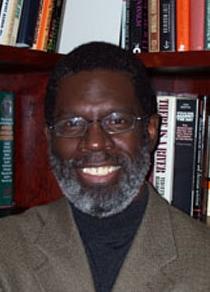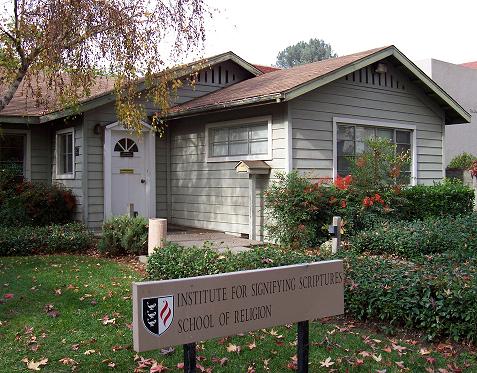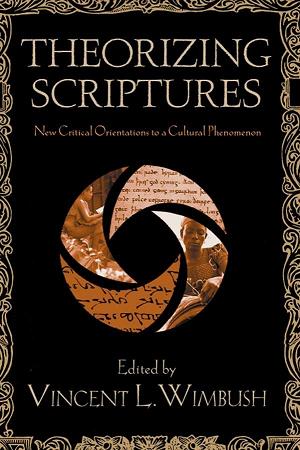| Signifying (on) Scriptures: Text(ures) and Orientations |
![PDF-NOTE: Internet Explorer Users, right click the PDF Icon and choose [save target as] if you are experiencing problems with clicking.](http://rsnonline.org/templates/rsntemplate-smallmasthead/images/pdf_button.png) |
 |
Guest Editor: Vincent L. Wimbush, Claremont Graduate University
The text that follows is part of an online conversation among five very creative and successful teacher-scholars: Grey Gundaker, Tat-siong Benny Liew, Margaret Aymer, Yan Shoucheng, and Nikky Singh. All are research associates of the Institute for Signifying Scriptures (ISS). The work of the ISS is the catalyst for this conversation. Established at the Claremont Graduate University in Claremont, California, in 2004, its agenda is to facilitate research and conversation about the work we make “scriptures” do for us. This agenda represents a rather different orientation to critical studies. It does not represent or privilege any one field or subfield; it represents nothing if not a scrambling and undermining of traditional approaches. It is focused not upon the boundaries of a field, tradition, or cultural grouping; it is structured around the pursuit of the problematics having to do with scriptures as phenomenon. This different orientation includes: 1) A comparative approach; 2) Focus on peoples — that is, social textures, not texts per se — to allow what “scriptures” mean to emerge out of social arrangements, productions, and practices. The basic interest is not in lexical/content meaning or literary/rhetorical forms of texts but on types of relationships with texts, how such relationships contribute to social texturing, and with what consequences. The pursuit is critical history(ies) not historical criticism; and 3) There is the privileging of, but not exclusive focus upon, the experiences and practices of historically dominated peoples. This privileging is a means of facilitating the emergence and sustained critical attention to issues and problems — especially those having to do with power that have historically not been addressed.
Located in different social-cultural and academic contexts, programs, and departments, and associated with different intellectual-political agendas and interests, they address the phenomenon of “scriptures” in their teaching and research on terms that are at some points different, in some ways complimentary, and at other times conflicting. The engagement is significant and bodes well for this intellectual-political approach and work. The Institute for Signifying Scriptures has developed four focal areas described below. In their opening statements, the teacher-scholars in this conversation will each provide a response to the questions, problems, and issues raised below in relation to their own areas of teaching and research. I. Teaching ScripturesHow should “scriptures” as cross-cultural phenomena be taught in the twenty-first century? To create multidisciplinary, multifield conversations about — and eventually actual multifield, multimedia models for — how “scriptures” as historical and perduring cross-cultural dynamics and phenomena can be discussed, debated, and taught in the twenty-first century. II. Material-Expressive Representations of ScriptureHow are “scriptures” represented in societies and cultures? To identify and analyze “scriptures” as new and ongoing but historically unrecognized types of material products and forms of social-cultural and embodied expressivities. III. Ethno-Graphics of ScriptureIn what circumstances and in what ways do groups make and reflect and use “scriptures,” and how are “scriptures” made to shape groups into “peoples”? To fully consider the local, national, and eventually world-wide collection of basic pertinent information about different groups (past and present; across and within; and in tension with existing ethnic and standing religious traditions) and their relationships to “scriptures,” and to analyze the material and expressive ways in which they create and use “scriptures” and thereby shape themselves as particular kinds of “people.” IV. Psycho-Socio-Logics and Politics of ScripturesWhy do people invent and use “scriptures”?
It should be clear that the aim is to pursue central questions — the critical history, social psychology, anthropology, and power dynamics/politics — having to do with the formation, deformation, and reformation of human beings. The analytical wedge of “scriptures” presents unusual opportunities and challenges for the study of religion. Here are the questions asked of the contributors in this issue: Colleagues: |


 Vincent L. Wimbush is Professor of Religion and Director of the Institute for Signifying Scriptures, Claremont Graduate University, in Claremont, California. His publications include The Bible and African Americans (2003) and the edited volume African Americans and the Bible: Sacred Texts and Social Textures (2000).
Vincent L. Wimbush is Professor of Religion and Director of the Institute for Signifying Scriptures, Claremont Graduate University, in Claremont, California. His publications include The Bible and African Americans (2003) and the edited volume African Americans and the Bible: Sacred Texts and Social Textures (2000). Affiliation with the Institute of Signifying Scripture does not mean that all are always in agreement with the agenda or positions of ISS, or with each other about issues and problems and strategies. Nor does it mean that they all agree that the phenomenon of “scriptures” is worth professing as part of an interest in understanding the complexities of social-cultural formation. Rather, it begs new and ongoing critical orientation and excavation — within and across academic categorizations and sociocultural traditions. These teacher-scholars go far beyond the simple interest in the lexical and content-meanings, backgrounds, and literary-rhetorical representations of texts.
Affiliation with the Institute of Signifying Scripture does not mean that all are always in agreement with the agenda or positions of ISS, or with each other about issues and problems and strategies. Nor does it mean that they all agree that the phenomenon of “scriptures” is worth professing as part of an interest in understanding the complexities of social-cultural formation. Rather, it begs new and ongoing critical orientation and excavation — within and across academic categorizations and sociocultural traditions. These teacher-scholars go far beyond the simple interest in the lexical and content-meanings, backgrounds, and literary-rhetorical representations of texts. What are some of the large- and small-scale structural power dynamics and issues provoked by and refracted through the uses of “scriptures”? To excavate and examine the social-psychological (including “religious”) interests, ideals, values, needs, commitments, goals, ideals, behavioral regimens/disciplines, and corresponding power structures, dynamics, differentiations, and relationships involved in the engagements of “scriptures.”
What are some of the large- and small-scale structural power dynamics and issues provoked by and refracted through the uses of “scriptures”? To excavate and examine the social-psychological (including “religious”) interests, ideals, values, needs, commitments, goals, ideals, behavioral regimens/disciplines, and corresponding power structures, dynamics, differentiations, and relationships involved in the engagements of “scriptures.”